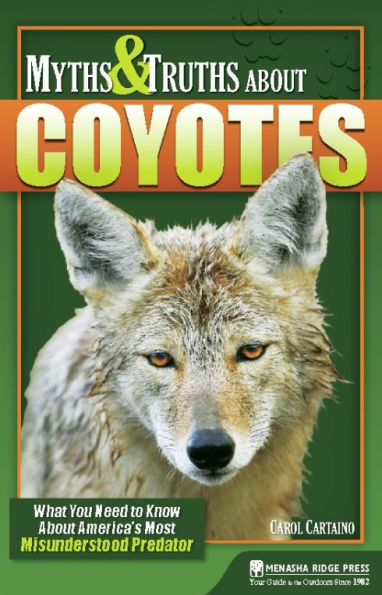Read an Excerpt
What do coyotes actually do all day? Am I more likely to see them in the daytime or at night?
To answer this question, we have to take “day” in its larger sense—that is, a 24-hour period. In their original prairie homes before European settlers arrived in this country, coyotes traveled about a great deal in the daytime. They still do, in undeveloped areas, wildlands, and anywhere they feel comfortable and unthreatened. And we may see them abroad in daylight almost anywhere, even now, during the pup-raising season, when both parents have to do a great deal of hunting to keep all of those little mouths fed. Young coyotes, such as half-grown pups, are very likely to be active during the day, as well.
However, for the most part, the more people who inhabit an area, the more nocturnal coyotes are there. Thus urban and suburban coyotes are more nocturnal than rural ones, though they may alter this pattern to take advantage of special circumstances they become aware of, such as someone faithfully pouring out big bowls of dog or cat food during the day.
In summer, coyotes are even more likely to be night hunters, since hot midday is not the best time to be moving around in a warm fur coat, and at this time of year, prey and fruits and vegetables, too, are plentiful. In winter, when food is much harder to come by, coyotes may be forced to do some daytime hunting just to stay alive.
Sunrise, sunset . . .
Even when coyotes are largely nocturnal, their all-time most active periods are when day eases into night, and vice versa. This means twilight and daybreak. As many of their prey species—many of them nocturnal too— are setting out for their night’s hunting or grazing, or winding down before the next day’s rest, the coyotes are out there, paying close attention.
The ghost on the move
In general, whenever human activity slows or stops, coyotes creep out and do their thing. Except for the brief period each year devoted to mating, this largely means prospecting for food. In one form or another, this is what occupies most of a coyote’s waking hours. In the nightly (or daily) quest to fill their bellies, coyotes follow game trails, livestock trails, human trails, dirt roads, other roads, train tracks, and power-line corridors. Just like us, they prefer the path of least resistance, whatever route will take them where they are headed the most direct and easiest way. They usually take the “back way” into places, traveling in the spots few people look at or pay attention to, such as the edges or back of things and in gullies, washes, and the like. If you have ever taken a train trip, you have seen how many parts of our everyday environment we are scarcely aware of, but they are there. Urban coyotes, especially, cross many a road in their forays, and the speed with which they do this can be awe-inspiring.
When just exploring for possibilities, they move at a trot, or quick shuffle. When they feel safe from observation or interference, they dart into farm fields and backyards, survey picnic areas and roadsides, many a place they would never venture to in the full light of day.
Naptime
When the time comes for a coyote to sleep, he often does so at midday, or the hottest part of a day. His “bedroom” is some protected area, usually one with good visibility. He doesn’t need an actual shelter of any kind, even in the winter, just some thick brush, a fencerow, thicket, pile of rocks or uprooted trees, or field of tall grass or weeds, or grain, that he can curl up amidst. In urban areas, he may even consider an abandoned building. But the ever-cautious coyote, even in captivity, usually prefers not to be enclosed in any way during his naptimes. Coyotes only use burrows, holes, or caves in denning time, or the most violent weather.



